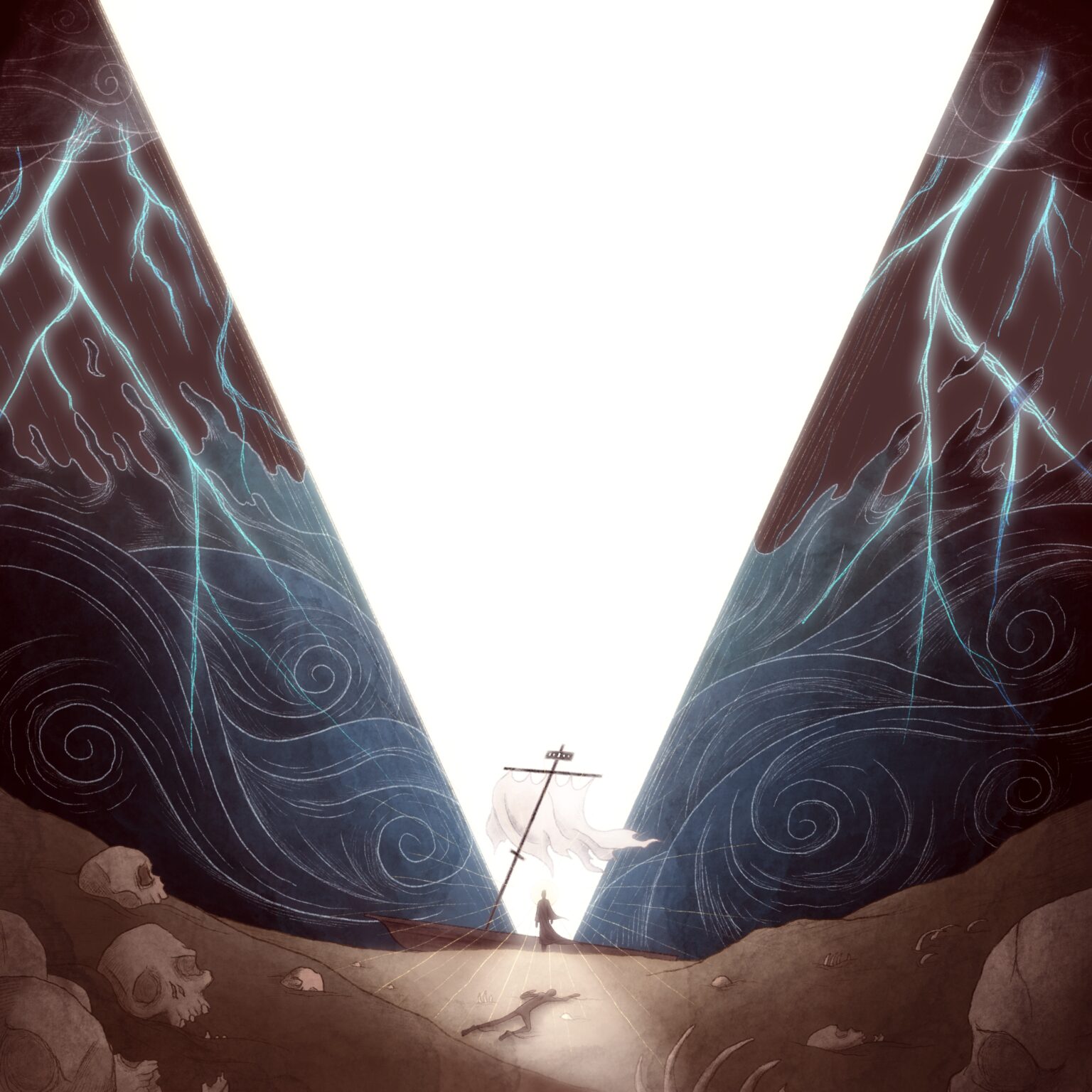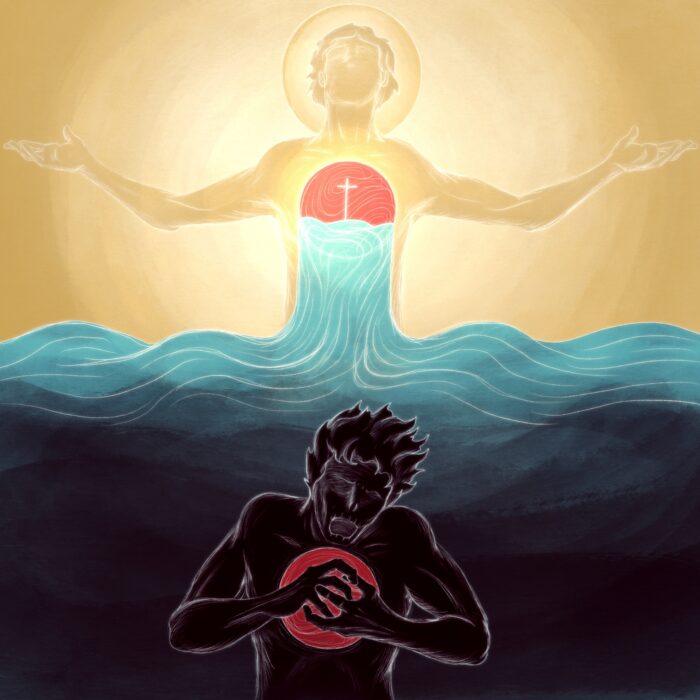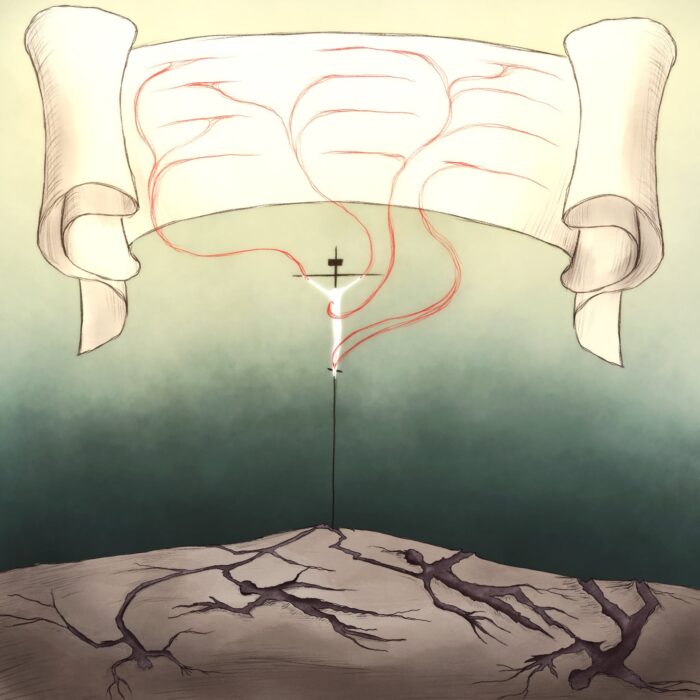Luke 8:26, ‘Then they sailed to the country of the Gerasenes…’
This is the first of two visual exegeses that will be considering Jesus’ interactions with the demoniac in the region of Gerasenes.
In this first post and picture, I just wanted to highlight the descent of Jesus as Living Hope into the darkness and death of this man’s demonic oppression.
Note first that the only reason Jesus enters into this region is to find and heal this man. Once the man has been freed from demonic stronghold into which he has fallen, Jesus immediately returns to Galilee (v.39-40). So we need to read this entire story as a mercifully motivated and personally directed rescue mission. Jesus, the Good Shepherd, goes out into the unclean and shadowed regions to find and free His straying sheep.
Secondly, see that this journey into the region of the demoniac is really a descent through judgment and death into the grave. Jesus begins in the familiar and peaceful region of Galilee (v.22), but once he has passed out into the depths of the lake—the abyss—A Jonah like storm (and image of the judgment of God) falls upon the boat (v.23-24). Then, on the other side of the storm He arrives on the unclean shores of Gerasenes and enters into the regions of the dead (v.27)…And it is here, beyond the depths of the abyss, beyond the storm of judgment, tormented in demonic bonds among the graves, that the Good Shepherd finds His lost lamb.
From this perspective, the journey to Gerasenes images and anticipates the cross. On the ship of the cross the Good Shepherd sails through the abyss of our forsakenness, endures the storm of our deserved judgment, and descends into the tomb of our demonic bondage….And He comes as God in the midst of our godforsakenness, as the Judge enduring our judgment, and as Life Himself piercing the heart of Death by death so that—by His return from these regions—prisoners of Death may be raised up to life.
In this image, a triangle frames the scene of because it is precisely in this descent of love that the Name of the Triune God—whom to know is to live—is made manifest.




